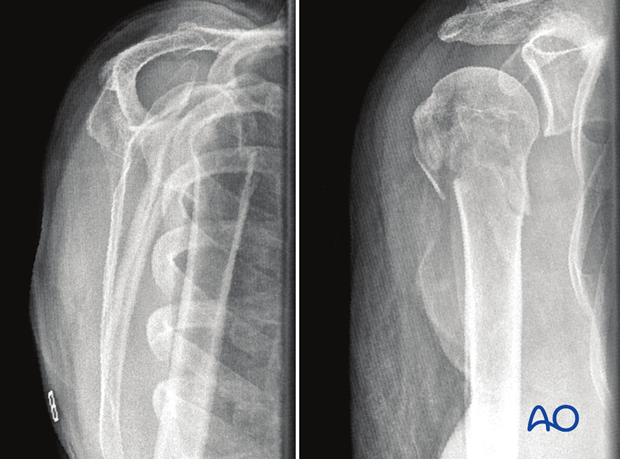Extraarticular 3-part, surgical neck and greater tuberosity, impaction
General considerations
These fractures are bifocal fractures, involving the surgical neck and the greater tuberosity. Neither fracture line involves the articular surface, and there is impaction of the metaphyseal (surgical neck) component.
The subgroups are distinguished by metaphyseal angulation.
Since the metaphyseal impacted fracture component is usually quite stable, the indication for surgery depends on the displacement of the tuberosity. Greater tuberosity displacement of more than 5 mm should be reduced and fixed. Also, if there is a severe displacement of the humeral head a reduction should be considered especially in the young.
Lateral impaction of surgical neck and involvement of greater tuberosity
In this subgroup, the fracture of the metaphysis is impacted laterally and involves a fracture of the greater tuberosity. These fractures appear as valgus impacted 3-part fractures. Due to the direction of the lateral impaction they can be divided in a pure lateral impaction, a posterolateral impaction, and a anterolateral impaction.
Since the periosteum is typically not ruptured, they tend to be quite stable.

X-rays by courtesy of B Ockert, LMU Munich, Germany.

Posterior impaction of surgical neck and involvement of greater tuberosity
In this subgroup, the fracture of the metaphysis is impacted posteriorly and involves a fracture of the greater tuberosity. These fractures appear as impacted 3-part fractures.
Since the periosteum is typically not ruptured, they tend to be quite stable.
Note the inherent danger of missing its anterior angulation if only an AP x-ray is considered.

X-rays by courtesy of B Ockert, LMU Munich, Germany.













